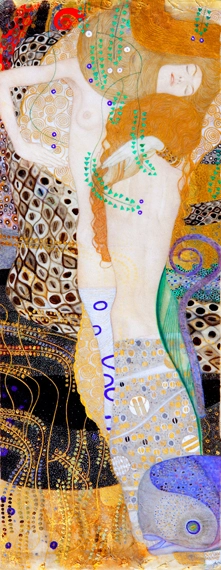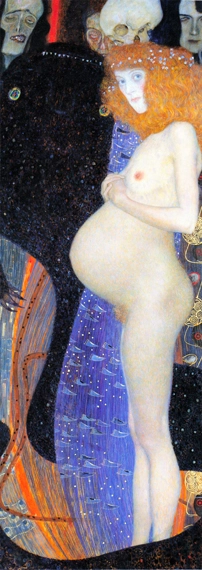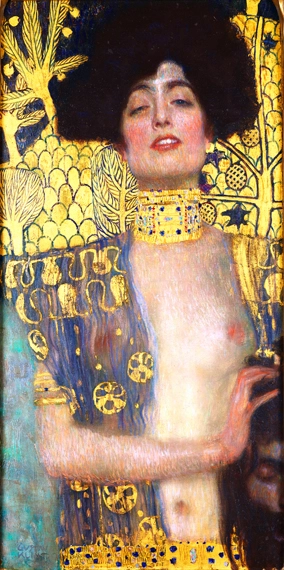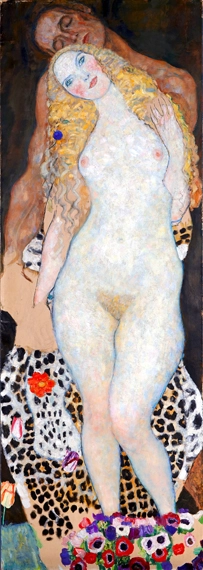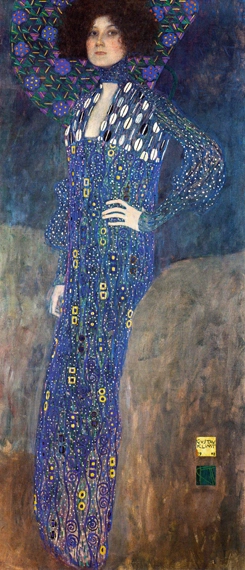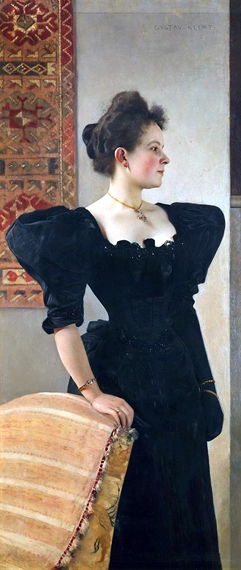5% Off Sitewide | Use code KMUS5 on checkout
- Choose your Country
5% Off Sitewide | Use code KMUS5 on checkout
Symbolism
Symbolism was a late nineteenth-century art movement of French and Belgian origin in poetry and other arts. In literature, the movement had its roots in Les Fleurs du mal (The Flowers of Evil, 1857) by Charles Baudelaire. The works of Edgar Allan Poe, which Baudelaire greatly admired and translated into French, were a significant influence and the source of many stock tropes and images. The aesthetic was developed by Stephane Mallarme and Paul Verlaine during the 1860s and ’70s. In the 1880s, the aesthetic was articulated through a series of manifestoes and attracted a generation of writers. The label “symbolist” itself comes from the critic Jean Moreas, who coined it in order to distinguish the symbolists from the related decadent movement in literature and art.
Distinct from, but related to, the movement in literature, symbolism in art represents an outgrowth of the darker, gothic side of Romanticism, but where Romanticism was impetuous and rebellious, symbolist art was static and hieratic.
Symbolism was largely a reaction against naturalism and realism, anti-idealistic movements which attempted to capture reality in its gritty particularity, and to elevate the humble and the ordinary over the ideal. These movements invited a reaction in favour of spirituality, the imagination, and dreams, the path to symbolism began with that reaction. Some writers, such as Joris-Karl Huysmans, began as naturalists before moving in the direction of symbolism, for Huysmans, this change reflected his awakening interest in religion and spirituality. On the other hand, certain of the characteristic subjects of the decadents reflect naturalist interest in sexuality and sordid subjects, but in their case this was mixed with a stiff dose of Byronic Romanticism and the world-weariness characteristic of the fin de siecle.
Symbolism in literature is distinct from symbolism in art although the two overlapped on a number of points. In painting, symbolism was a continuation of some mystical tendencies in the Romantic tradition, which included such artists as Caspar David Friedrich, Fernand Khnopff and John Henry Fuseli and it was even more closely aligned with the self-consciously dark and private decadent movement.
There were several rather dissimilar groups of symbolist painters and visual artists, which included Gustave Moreau, Gustav Klimt, Mikalojus Konstantinas Ciurlionis, Odilon Redon, Pierre Puvis de Chavannes, Henri Fantin-Latour, Edvard Munch, Felicien Rops, and Jan Toorop. Symbolism in painting had an even larger geographical reach than symbolism in poetry, reaching Mikhail Vrubel, Nicholas Roerich, Victor Borisov-Musatov, Martiros Saryan, Mikhail Nesterov, Leon Bakst in Russia, as well as Frida Kahlo in Mexico, Elihu Vedder, Remedios Varo, Morris Graves, David Chetlahe Paladin, and Elle Nicolai in the United States. Auguste Rodin is sometimes considered a symbolist in sculpture.
The symbolist painters mined mythology and dream imagery for a visual language of the soul, seeking evocative paintings that brought to mind a static world of silence. The symbols used in symbolism are not the familiar emblems of mainstream iconography but intensely personal, private, obscure and ambiguous references. More a philosophy than an actual style of art, symbolism in painting influenced the contemporary Art Nouveau movement and Les Nabis. In their exploration of dreamlike subjects, symbolist painters are found across centuries and cultures, as they are still today, Bernard Delvaille has described Rene Magritte’s surrealism as “Symbolism plus Freud”.
In the English-speaking world, the closest counterpart to symbolism was aestheticism. The pre-Raphaelites were contemporaries of the earlier symbolists, and have much in common with them. Symbolism had a significant influence on modernism, and its traces can be seen in the work of many modernist artists, including T. S. Eliot, Wallace Stevens, Conrad Aiken, Hart Crane, and William Butler Yeats in the anglophone tradition and Ruben Dario in Hispanic letters. The early poems of Guillaume Apollinaire have strong affinities with symbolism.
The cover to Aleksandr Blok’s 1909 book, Theatre. Konstantin Somov’s illustrations for the Russian symbolist poet display the continuity between symbolism and Art Nouveau artists such as Aubrey Beardsley.
In Romania, symbolists directly influenced by French poetry first gained influence in the 1880s, when Alexandru Macedonski reunited a group of young poets around his magazine Literatorul. Polemicizing with the established Junimea and overshadowed by the influence of Mihai Eminescu, symbolism was recovered as an inspiration during and after the 1910s, when it was voiced in the works of Tudor Arghezi, Ion Minulescu, George Bacovia, Ion Barbu, Mateiu Caragiale and Tudor Vianu, and held in esteem by the modernist magazine Sburatorul.
The symbolist painters were an important influence on expressionism and surrealism in painting, two movements which descend directly from symbolism proper. The harlequins, paupers, and clowns of Pablo Picasso’s “Blue Period” show the influence of symbolism, and especially of Puvis de Chavannes. In Belgium, symbolism penetrated so deeply that it came to be thought of as a national style: the static strangeness of painters like Rene Magritte can be seen as a direct continuation of symbolism. The work of some symbolist visual artists, such as Jan Toorop, directly impacted the curvilinear forms of Art Nouveau.
Many early motion pictures also employ symbolist visual imagery and themes in their staging, set designs, and imagery. The films of German expressionism owe a great deal to symbolist imagery. The virginal “good girls” seen in the films of D. W. Griffith, and the silent movie “bad girls” portrayed by Theda Bara, both show the continuing influence of symbolism, as do the Babylonian scenes from Griffith’s Intolerance. Symbolist imagery lived on longest in horror film: as late as 1932, Carl Theodor Dreyer’s Vampyr showed the obvious influence of symbolist imagery, parts of the film resemble tableau vivant re-creations of the early paintings of Edvard Munch.
Read moreShowing 1–100 of 322 results

The Kiss
By Gustav KlimtSizes starting at $249.00
The Scream
By Edvard MunchSizes starting at $289.00
Adele Bloch-Bauer I
By Gustav KlimtSizes starting at $249.00
The Scream
By Edvard MunchSizes starting at $279.00
Anxiety
By Edvard MunchSizes starting at $289.00
Hope II
By Gustav KlimtSizes starting at $249.00
Despair
By Edvard MunchSizes starting at $279.00
Watersnakes II (Girlfriends)
By Gustav KlimtSizes starting at $369.00
Despair
By Edvard MunchSizes starting at $299.00
Girlfriends (Water Snakes I)
By Gustav KlimtSizes starting at $459.00
Danae
By Gustav KlimtSizes starting at $269.00
Madonna
By Edvard MunchSizes starting at $289.00
Goldfish
By Gustav KlimtSizes starting at $479.00
The Sun
By Edvard MunchSizes starting at $389.00
Hope I
By Gustav KlimtSizes starting at $489.00
The Girl By The Window
By Edvard MunchSizes starting at $309.00
Baby (Cradle)
By Gustav KlimtSizes starting at $249.00
The Sun
By Edvard MunchSizes starting at $299.00
Kiss By The Window
By Edvard MunchSizes starting at $299.00
The Three Ages of Woman
By Gustav KlimtSizes starting at $249.00
Evening On Karl Johan Street
By Edvard MunchSizes starting at $319.00
The Virgin
By Gustav KlimtSizes starting at $259.00
Death and Life
By Gustav KlimtSizes starting at $279.00
Madonna
By Edvard MunchSizes starting at $289.00
Red And White
By Edvard MunchSizes starting at $319.00
Woman With Fan
By Gustav KlimtSizes starting at $249.00
Jealousy
By Edvard MunchSizes starting at $289.00
Portrait of Fritza Riedler
By Gustav KlimtSizes starting at $259.00
Dance Of Life
By Edvard MunchSizes starting at $319.00
Portrait of Eugenia (Mada) Primavesi
By Gustav KlimtSizes starting at $349.00
Portrait-of-Adele-Bloch-Bauer-II
By Gustav KlimtSizes starting at $329.00
Vampire
By Edvard MunchSizes starting at $279.00
Judith I
By Gustav KlimtSizes starting at $389.00
The Murderess
By Edvard MunchSizes starting at $319.00
Judith II
By Gustav KlimtSizes starting at $629.00
The Murderer
By Edvard MunchSizes starting at $339.00
Mäda-Primavesi
By Gustav KlimtSizes starting at $299.00
The Woman In Three Stages
By Edvard MunchSizes starting at $329.00
Dance On The Beach
By Edvard MunchSizes starting at $259.00
Girl With Blue Veil
By Gustav KlimtSizes starting at $279.00
Girlfriends
By Gustav KlimtSizes starting at $249.00
Moonlight
By Edvard MunchSizes starting at $289.00
Summer Night
By Edvard MunchSizes starting at $309.00
The Dancer (Vorher Ria Munk II)
By Gustav KlimtSizes starting at $379.00
Friederike Maria Beer
By Gustav KlimtSizes starting at $289.00
Summer Night’S Dream (The Voice)
By Edvard MunchSizes starting at $279.00
At The Roulette Table In Monte Carlo
By Edvard MunchSizes starting at $319.00
Portrait of Baroness Elisabeth Bachofen
By Gustav KlimtSizes starting at $299.00
Amalie Zuckerkandl
By Gustav KlimtSizes starting at $259.00
Gamblers In Monte Carlo
By Edvard MunchSizes starting at $289.00
Johanna Perennial
By Gustav KlimtSizes starting at $299.00
Melancholy
By Edvard MunchSizes starting at $309.00
Portrait of a Lady Original
By Gustav KlimtSizes starting at $299.00
Self Portrait
By Edvard MunchSizes starting at $329.00
Portrait of a Lady
By Gustav KlimtSizes starting at $279.00
Self Portrait In Hell
By Edvard MunchSizes starting at $279.00
Galloping Horse
By Edvard MunchSizes starting at $279.00
Lady With the Muff
By Gustav KlimtSizes starting at $259.00
Lady in White
By Gustav KlimtSizes starting at $249.00
Separation
By Edvard MunchSizes starting at $309.00
Golgotha
By Edvard MunchSizes starting at $329.00
Portrait of Helen Klimt 1893
By Gustav KlimtSizes starting at $319.00
Dame Mit Hut Und Federbos
By Gustav KlimtSizes starting at $269.00
Death In The Sickroom
By Edvard MunchSizes starting at $289.00
Ashes
By Edvard MunchSizes starting at $269.00
Hygieia
By Gustav KlimtSizes starting at $299.00
Medicine Lost Painting
By Gustav KlimtSizes starting at $299.00
Workers On Their Way Home
By Edvard MunchSizes starting at $279.00
Metabolism
By Edvard MunchSizes starting at $279.00
Pallas Athene 1898
By Gustav KlimtSizes starting at $259.00
Nuda Veritas
By Gustav KlimtSizes starting at $709.00
The Kiss
By Edvard MunchSizes starting at $279.00
Adam and Eve
By Gustav KlimtSizes starting at $489.00
Inheritance
By Edvard MunchSizes starting at $269.00
Will O’ the Wisp
By Gustav KlimtSizes starting at $279.00
Young Woman On The Veranda
By Edvard MunchSizes starting at $289.00
Bewegte Wasser
By Gustav KlimtSizes starting at $299.00
Ladies On The Bridge
By Edvard MunchSizes starting at $269.00
Girl On A Bridge
By Edvard MunchSizes starting at $319.00
Mutter Mit Zwei Kindern (Familie)
By Gustav KlimtSizes starting at $249.00
The Girls On The Bridge
By Edvard MunchSizes starting at $259.00
Woman in An Armchair
By Gustav KlimtSizes starting at $259.00
Girls On The Bridge
By Edvard MunchSizes starting at $249.00
Portrait of Emilie Floge 1902
By Gustav KlimtSizes starting at $419.00
Portrait of Rose Von Rosthorn Friedmann
By Gustav KlimtSizes starting at $359.00
The Smell Of Death
By Edvard MunchSizes starting at $259.00
Four Girls In Asgardstrand
By Edvard MunchSizes starting at $289.00
Margaret Stonborough Wittgenstein
By Gustav KlimtSizes starting at $389.00
Portrait Marie Henneberg
By Gustav KlimtSizes starting at $249.00
Starry Night
By Edvard MunchSizes starting at $269.00
Portrait of Hermine Gallia (1904)
By Gustav KlimtSizes starting at $359.00
Summer Night By The Beach
By Edvard MunchSizes starting at $269.00
Clothes On A Line In ÅSgåRdstrand
By Edvard MunchSizes starting at $269.00
Sonja Knips
By Gustav KlimtSizes starting at $249.00
Portrait of Gertrud Loew
By Gustav KlimtSizes starting at $559.00
The Sower
By Edvard MunchSizes starting at $289.00
Portrait of a Woman
By Gustav KlimtSizes starting at $429.00
The Yellow Log
By Edvard MunchSizes starting at $279.00
Girl’s Head Turned Left
By Gustav KlimtSizes starting at $299.00
Spring Day On Jeloya
By Edvard MunchSizes starting at $279.00










